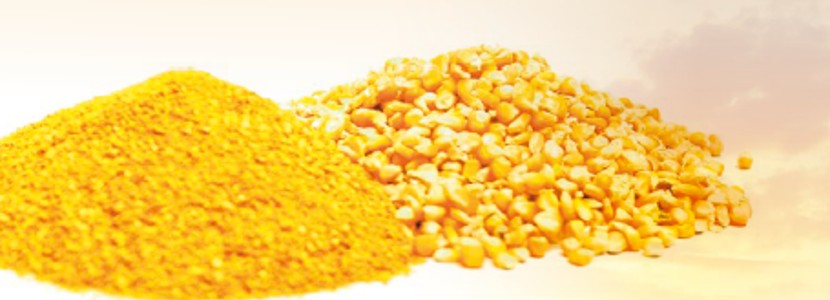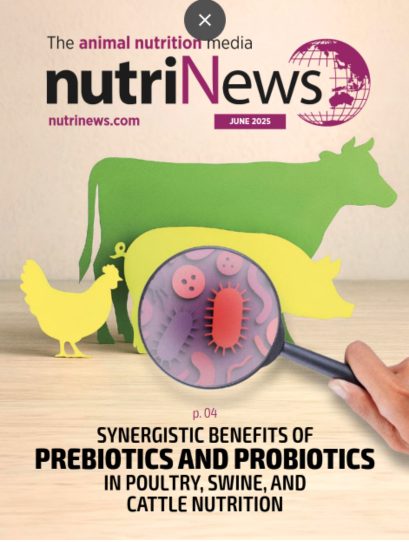DDGS (Dried Distillers Grains with Solubles) are an alternative feed for the formulation of pig diets as well as being a sustainable way in which to use the residues derived from cereal-based ethanol production.
The energy present in DDGS as well as fiber, protein and digestible phosphorus makes this raw material attractive for pig production, partially replacing corn and soybean meal.
DDGS have a brown coloration and can hold some golden tones,which are characteristic in fermented foods. Carbon dioxide and alcohol are also by products of the fermentation process(Corassa et al., 2018).
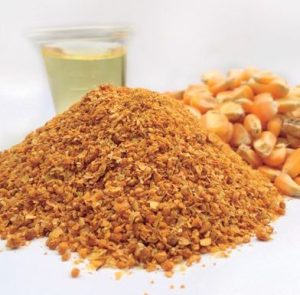
According to Curry et al. (2018) the use of corn DDGS in pig feed has increased due to:
- Its availability
- Its high energy value
- Its available amino acid and phosphorus values
According to Wang et al. (2008) maize was the first cereal to be used for ethanol production in the United States, although triticale and sorghum were also used for the same purpose in pig feed.
When analyzing the chemical composition of the DDGS obtained from the three grains mentioned above, results show promising potential. Making them interesting alternatives to be considered in the formulation of pig diets(Table 1).
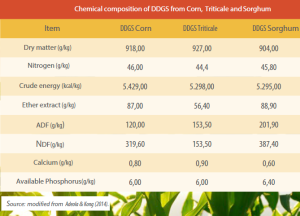
[register]
Although Brazil is one of the world’s largest ethanol producers, most of its production currently comes from sugarcane.
According to data from UNICA (Union of the Sugarcane Industry) in the report published in the second quarter of 2021, ethanol from corn reached 2.57 billion liters of production during the 2020/21 campaign, which marked anincrease of 58.13% compared to the previous campaign.
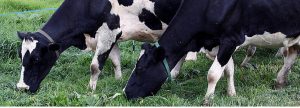
In many recent studies, low-tannin sorghum with adequate processing demonstrated equal performance for pigs relative to maize-based diets, thus being able to completely replace dietary corn.
- When talking about DDGS obtained from sorghum grains, the values of digestible fiber and metabolizable energy are lower than those obtained with corn DDGS (Corrassa, 2019).
- In addition, some studies indicate that a greater inclusion of sorghum DDGS causes worsening of yield and lower feed efficiency for piglets, possibly associated with a variation in the nutritional composition of each source of DDGS, the amounts of solubles added in the diet and the adaptation of animals.

On the other hand, both maize and sorghum DDGS contain relatively high concentrations of phosphorus (P), which are highly available to pigs. This reduces the need to add inorganic phosphorus in the diet, which is quite significant for feed costs.
Along with corn and sorghum, another potential cereral to be used as a source of DDGS is triticale. A winter cereal, resulting from the hybridization of two different species: wheat and rye.
The crude protein content of the grain varies between 9% and 20% of dry matter and its lysine content, which is a limiting amino acid in most cereals, is higher than that found in wheat or rye.
- The higher lysine content in triticale allows to reduce the percentage of soybean meal in the diet. However, its lower energy value may lead to worse feed conversion in certain cases.
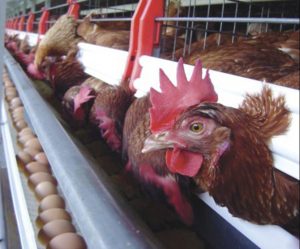
Triticale has an auto-amylolytic enzyme system, which collaborates in the conversion of large amounts of starch into fermentable sugars. This can supplant the need to include enzymes for starch degradation.
- On the other hand, phytase activity for this cereal has been described as intermediate between that of rye and wheat.
Modern triticale crops are considered competitive feedstocks for ethanol production.When comparing bioethanol production costs for triticale, rye and wheat, Rosenberg et al. (2002)found that triticale presented the lowest cost per liter.
- This was due to the high ethanol yield per hectare, which may favor the industry’s interest in the grain Resulting in greater availability of the DDGS generated from this activity.
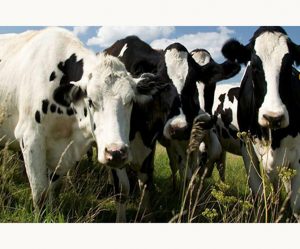
Differences in the nutritional composition of DDGS
One factor compromising the use of DDGS in rations is nutritional quality. Corn and other grains used in ethanol manufacturing can have different nutritional compositions. These can directly interfere with the nutritional variation of this by-product.
- Spiehs et al. (2002) and Belyea et al. (2010) state that certain stages within the production system, such as: fermentation and drying time, as well as the temperature to which ingredients are subjected to, can interfere with the results of DDGS analyses.
![]() Depending on the temperature process for obtaining DDGS, there may be amino acid variations when comparing the chemical analysis of products from different companies. There may be damage to the ingredients due to high temperatures and humidity, which are favorable for initiating a Maillard reaction, which reduces amino acid concentration and digestibility (Almeida et al. , 2013).
Depending on the temperature process for obtaining DDGS, there may be amino acid variations when comparing the chemical analysis of products from different companies. There may be damage to the ingredients due to high temperatures and humidity, which are favorable for initiating a Maillard reaction, which reduces amino acid concentration and digestibility (Almeida et al. , 2013).
Considering that grain starch is used in biofuel production, proteins, fats and fibers remain available for animal consumption when DDGS is offered as an ingredient in the ration.
For such reason, the resulting by-product of corn can be used both as a substitute for corn and soybeans. Therefore, it worth noting that due to its high fiber content, it necessary to include exogenous enzymes within the ration.
- Following this train of thought, Dantas et al. (2020) revealed the efficacy of using DDGS combined with a multienzyme complex. Showing that a 25% inclusion level for DDGs did not impact animal performance during growth and termination. While the inclusion of the multienzyme complex improved digestibility and the profile of intestinal microbiota.
- This represents an advantage in production systems, as it allows competitive dietary costs when compared to traditional diets.

When analyzing the nutritional composition of DDGS from corn, corn, sorghum and soybean meal, the values of metabolizable energy, dry matter, available phosphorus, etheric extract and crude fiber stand out. This is worth mentioning as the latter are two of the main ingredients in pig diets..
In relation to amino acid composition, DDGS from corn have higher percentages than those found in sorghum and corn grains.
In a study by Estevam et al. (2018), when DDGS was included at weaning, this resulted in variations in the performance of piglets fed increasing levels of DDGS. This was analyzed over several different studies.
According to the authors, this variation is related to different sources of DDGS and the composition of the ingredients analyzed in each experiment. Taking into account that in different studies where the same inclusion levels were used, there were performance variations.
Current animal production systems, require new feed ingredients that contribute to improving animal performance at reasonable costs, with sustainability as a main focus. Under such scenario DDGS represent a promising ingredient for pig diets. It is an opportunity to reduce feed costs, while having a growing projections in regards to its availability.
[/register]
